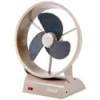Synthetic Sleeping Bag Insulation
Synthetic sleeping bag insulations are man-made fibers that have many excellent qualities. They cost less, are more washable, can be almost as warm as down, and are more compatible with wet weather.
Modern synthetics have been so refined and developed that they have replaced down fill in camping sleeping bags to a great extent. Although synthetics cost much less than down, a synthetic sleeping bag won’t last as long; nor can synthetics maintain insulating ability as well as down sleeping bags. The very best synthetic fills come very close to the thermal efficiency of down, but are still unable to completely match it.
Synthetic fills have many advantages that make them the best choice for most car camping and family camping trips. The fact that they are usually very inexpensive is a definite plus. A synthetic sleeping bag fill doesn’t require as much maintenance as down sleeping bags. Also, Synthetic fill is non-allergenic and works great for those campers who are allergic to down and feathers.
Rain and Wet Conditions
A synthetic fill is an excellent choice for canoe trips and for camping in wet conditions. Synthetic bags will retain much of their warmth, even when wet. If you get your camping gear wet occasionally, a synthetic bag may be your best choice. Unlike down, synthetic fills can maintain their “loft,” or thickness, (thus holding more air and warmth) when wet.
Synthetics also dry out very quickly, while down does not. They are resistant to mildew and rot. If you do a lot of camping around water, you may prefer a synthetic sleeping bag fill. A synthetic sleeping bag is able to retain about 65% of your body heat even when wet; far more than wet down.
For backpackers and hikers, however, synthetics do tend to be heavier than down. Synthetics are bulkier and take up more pack room than a down sleeping bag of comparable warmth capacity.
As technology increases, the result is better and better insulation power. Current synthetics are closer in weight, warmth and compressibility to down than was ever imagined possible. The types and forms of synthetic fibers will vary greatly. Some fibers are continuous and long, others are short. Most are hollow to help them better trap air. Some fibers may have many hollow tunnels extending through the length of the fiber. The fibers are sometimes treated with silicon to improve their loft capacity.
By changing and varying the fiber characteristics, the fiber manufacturers can produce different desired comfort effects and improve the thermal efficiency of the fill or “batting.” They will vary the fiber diameter and length. They can also vary the shape of the fiber cross section, the fiber crimp, and the size and shape of the hollows inside of the fiber. Then the batting producers will even vary the thickness, weight and density of the fiberfill.
Some synthetic insulations are Polarguard 3D, Primaloft Sport, Thermolite Extreme, Quallofil, and Lite Loft. Other insulations may be made of Dacron 88, Holofil II, DuPont Fiberfill II, Permaloft, Microloft, Acryloft and DN500. They can closely equal goose down's loft, insulating ability and light weight. You may want to check for one of these when you are picking out a sleeping bag.
A sleeping bag with synthetic fill has usually has the synthetic fibers bonded into sheets. They often differ in how they are bonded together. When the insulation is bonded, there is no need for it to be quilted; this significantly reduces the weakened areas at the point of quilting that become cold spots in the sleeping bag.
One popular way synthetic fills are installed in sleeping bags is called the shingle method. Cut pieces or sheets of fill are stitched to the shell and lining. They overlap like shingles. Any one point of the sleeping bag has several layers to prevent unnecessary heat loss.
Be careful, for sometimes lower quality sleeping bags will have quick, lower-cost finishing construction. They may have poor overlap or defective stitching which may cause the shingles to be unable to loft properly next to the zipper or near where the foot box is sewn.
Synthetic sleeping bag insulation is one kind of sleeping bag fill. The other
kind is natural down insulation. Only you
will know which one is best for you.










